WWII living history event honors 80th anniversary of war’s end
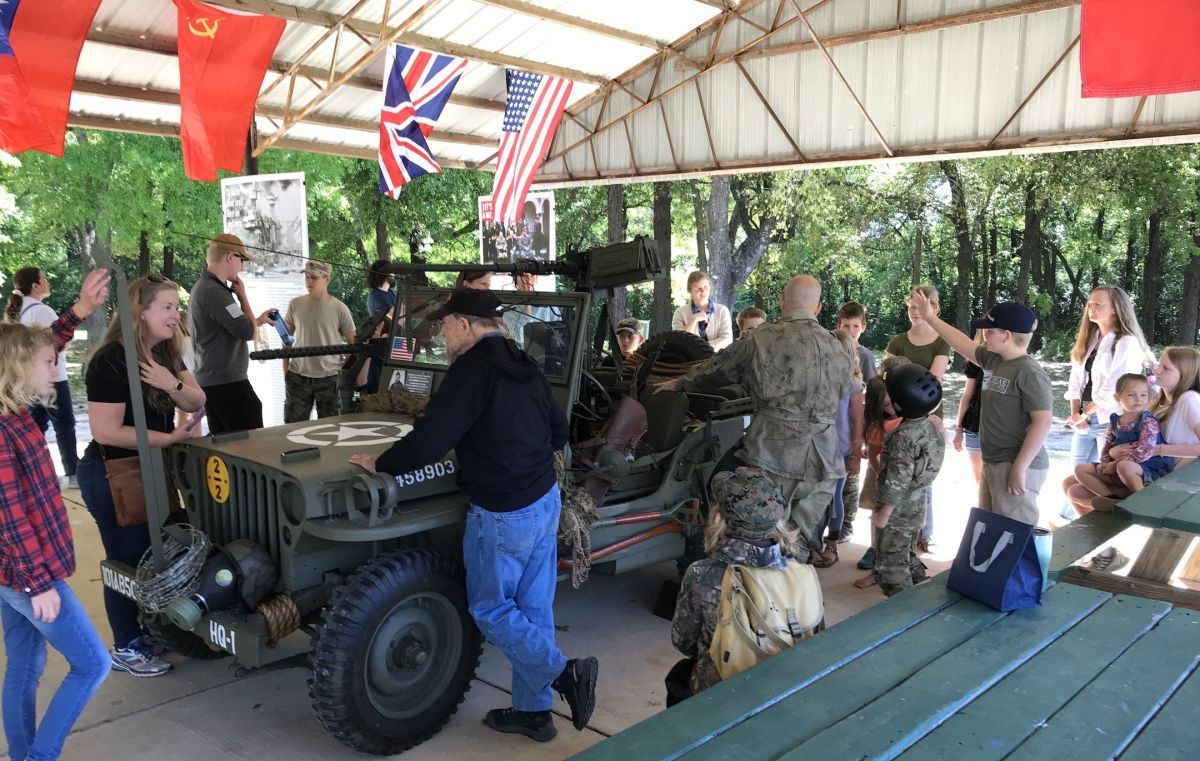
Organizers hope to add more vehicles and equipment displays, enlarge the onsite museum, and, if technology cooperates, add some exciting special effects to the battle scenarios.
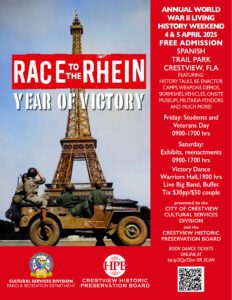
The April 4 and 5 event, which includes activities and attractions from 9 a.m. to 5 p.m. both days, is designated “The Year of Victory,” with emphasis through displays and presentations on the ultimate defeat of the Axis powers in Europe and Asia. Since the first event in June 2019, the focus has always been on education and sharing the history of the conflict in lively and colorful ways.
Historian and U.S. Navy veteran Henry Gonzalez, one of Race to the Rhein’s organizers, said in addition to honoring the war’s veterans, the weekend’s other main goal is to “educate younger generations about World War II.”
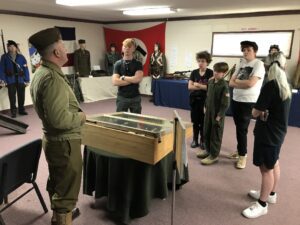
“The Race to the Rhein event is a living history interpretation and experience that, as a learning method, uses many presentation forms for a better understanding of history,” he said.
“The bottom-line goal is to primarily promote greater understanding of World War II history and the cultures that also participated in this great conflict,” Gonzalez continued. “We cover these dark chapters in human history by using authentic clothing, vehicles, skills and stories in our living history interpretation, which is appropriate for all school levels and for everyone in the general public.”
History Turns ‘Real’
During one of last year’s Race to the Rhein battle “scenarios,” the smoke and smell of gunpowder had not yet cleared the air, but with the German defenders vanquished, high school student Nicholas came away with a whole new appreciation of World War II history.
“We study the war in history class, but to see these soldiers and all the stuff they had to carry while running and shooting, what we learn in class becomes more real,” he said. “This [event] helps us see how it probably happened in real life during the war.”
Well, not quite. Nobody actually died. After the scenario was declared completed, the “casualties” picked themselves up and kids among the audience swarmed under the fake barbed wire barrier to pick up brass ammo casings for souvenirs. But for 20 minutes or so, the intensity was real enough.
With some of his classmates, Nick had already visited the Allied and Axis encampments and handled unloaded weapons. Next, they turned toward the onsite museum, where exhibits of uniforms, weapons, flags, war-era posters, newsreels, guided tours and more awaited.
Their first stop, though, was a visit to the WWII Milestones History Pavilion and its jeep and to read the several history panels mounted on each column. They examined the flags of Allied and Axis nations that flapped in the steady breeze overhead.
“Knowing what we do now, that Nazi flag is just scary,” Nick observed.
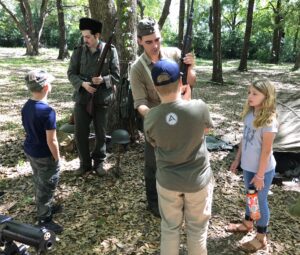
Underscoring the war’s global nature, Gonzalez and his fellow organizers are inviting reenactors who represent many of the diverse nationalities from both sides who will share their perspectives.
Andrew Untamo, whose reenactor “impressions” include soldiers from both sides of the conflict, said when he dons those unforms, it affords him an opportunity to present the war from the different sides’ perspectives and share that history with visitors.
“You realize that soldiers on both sides were just ordinary guys who got caught up in a war that sometimes didn’t make sense to them,” Untamo said. “But they did their duty anyway.”
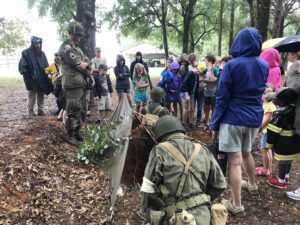
Dancing and dining
By visiting camps like Untamo’s, reading the panels in the History Pavilion, perusing displays in the Crestview Senior Center — which for the duration of Race to the Rhein becomes an on-site museum — and hearing Gonzalez’s presentations, visitors receive a broad overview of World War II and the men and women who fought to triumph over the Axis dictatorships.
The two-day event is capped by a Saturday night Victory Dance, from 7 p.m. to 9 p.m. April 5, featuring dancing to the big band sounds of Hashtag Swing, a heavy hors d’oeuvres and desserts buffet, a cash beer and wine stand hosted by the Main Street Crestview Association, and more World War II displays.
Tickets are $30 per person or $50 per couple and are available with no ticketing fees online at bit.ly/3CJeTDm.
Residents can honor their World War II veteran family members and special friends by lending a framed photo of the honoree in their uniform to the Honor Table display in the onsite museum. The tables will also be set up at the Victory Dance.
Park in the southeast Spanish Trail Park field off Stillwell Boulevard and enter through the gate behind the Amphitheatre. Admission and parking are free.
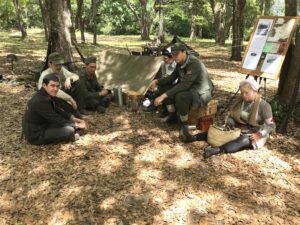
For information, including reserving an entry time for classes on Student and Veterans Day, Friday, April 4, call the Crestview Cultural Services Division at 850.398.5459 or email hughesb@cityofcrestview.org.
(Editor’s note: Brian Hughes is the city of Crestview’s cultural services specialist)
What is Living History and Why is It Important?
Living history education encompasses period music, acting, dance, period skills, fashion and material culture, and documented storytelling that expands national and local historical and cultural awareness. As a tangible and real aspect for people to see and learn from, living history has been proven to spark interest and promote support to the next generations so we may keep the memory of those who made such massive sacrifices and accomplishments ever present. Living history brings historic events to life through dedicated reenactors who are committed to portraying historic figures, soldiers and leaders with historic accuracy.
Henry Gonzalez, historian; Race to the Rhein organizer, adviser





